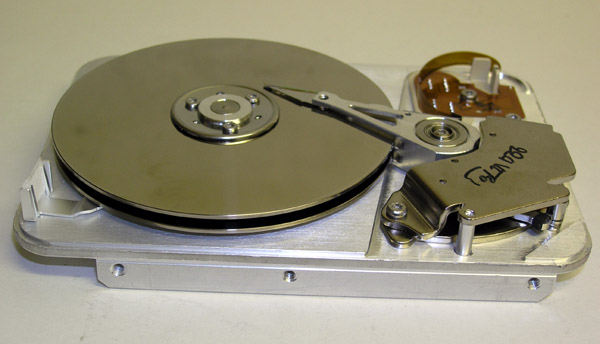
Disk drive technology has evolved over decades. This is a typical modern drive geometry.
It is missing the protective covering that would have isolated it from the OUTSIDE
and the electronics that controlled it and was the interface to the computer it was part of.
Apart from the electronics there were two other components, the disks and the head assembly.
Here is the disk drive taken to bits. On the left is the disks, on the right the head assembly.
There are just two disk platters (four recording surfaces), a spacer between them and a top ring
and six screws that fixed the disks to the synchronous motor (bottom left).
The motor was fixed to the base plate by three screws.
The head assembly consisted of an arm that rotated about a bearing between the read/write heads (left),
and the voice coil (right). The four heads moved over the four disk surfaces and the voice coil moved
between the two metal plates, to one of which was fixed a VERY strong permanent magnet.
This is a closeup of the head assembly bearing. It is large, lightly loaded, not going to wear.
In addition you can see the voice coil behind and the wires to the heads on the right.
Here are the four heads. The bottom pair I have wedged open with a screw, the top pair are pressed
together because the are loaded to press against the disk surface, but kept off it by a boundary layer
of air moving with the disk. But they have to be very close to write very small, so the disk surface
has to be very smooth, and the electro magnetic coating very thin, and ...
All I have done here is just show the disk artifacts we have in our collection, but there is much more
to say about disk drive technology. I am not qualified, I leave it to others.